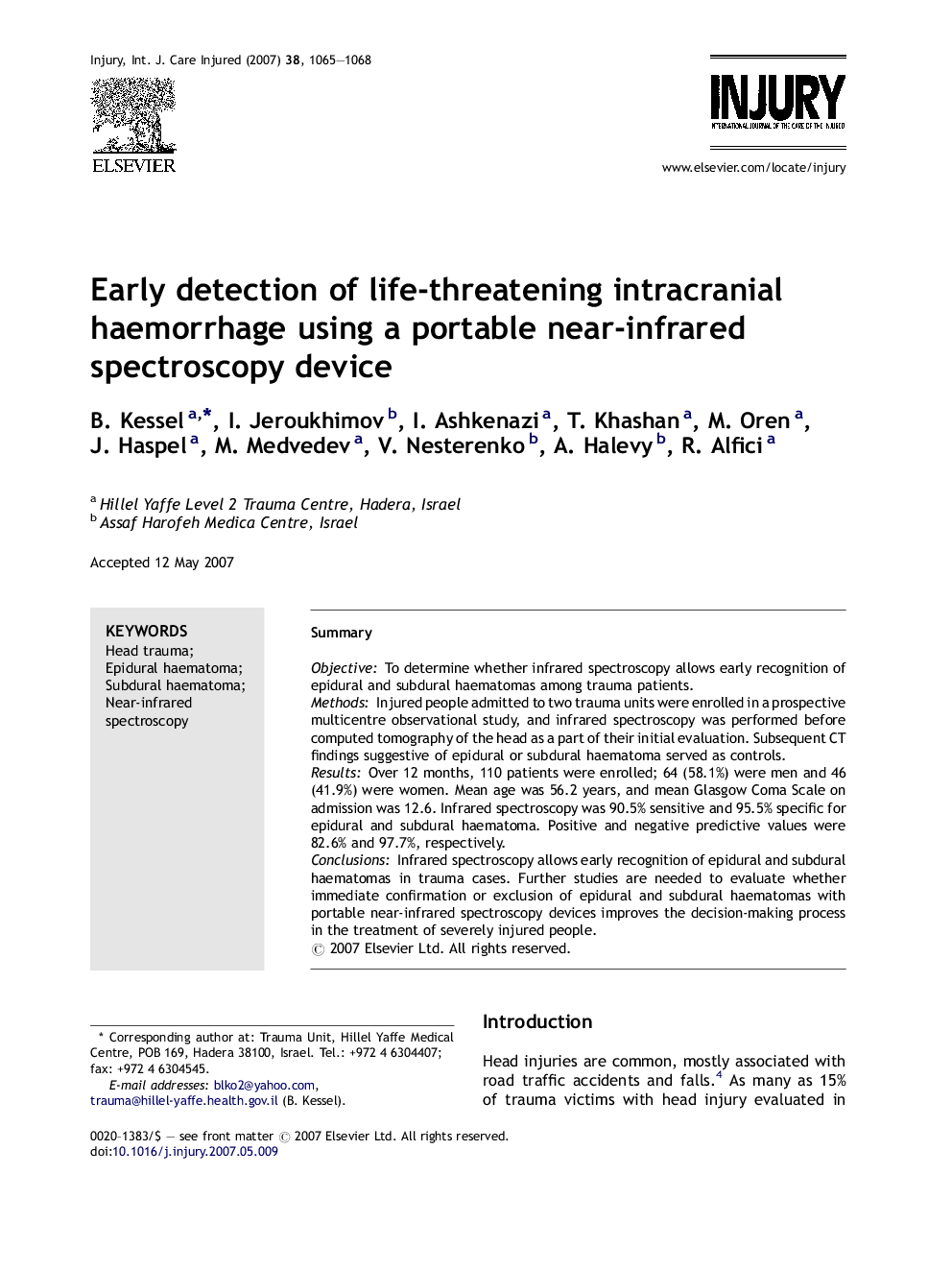| Article ID | Journal | Published Year | Pages | File Type |
|---|---|---|---|---|
| 3243114 | Injury | 2007 | 4 Pages |
SummaryObjectiveTo determine whether infrared spectroscopy allows early recognition of epidural and subdural haematomas among trauma patients.MethodsInjured people admitted to two trauma units were enrolled in a prospective multicentre observational study, and infrared spectroscopy was performed before computed tomography of the head as a part of their initial evaluation. Subsequent CT findings suggestive of epidural or subdural haematoma served as controls.ResultsOver 12 months, 110 patients were enrolled; 64 (58.1%) were men and 46 (41.9%) were women. Mean age was 56.2 years, and mean Glasgow Coma Scale on admission was 12.6. Infrared spectroscopy was 90.5% sensitive and 95.5% specific for epidural and subdural haematoma. Positive and negative predictive values were 82.6% and 97.7%, respectively.ConclusionsInfrared spectroscopy allows early recognition of epidural and subdural haematomas in trauma cases. Further studies are needed to evaluate whether immediate confirmation or exclusion of epidural and subdural haematomas with portable near-infrared spectroscopy devices improves the decision-making process in the treatment of severely injured people.
